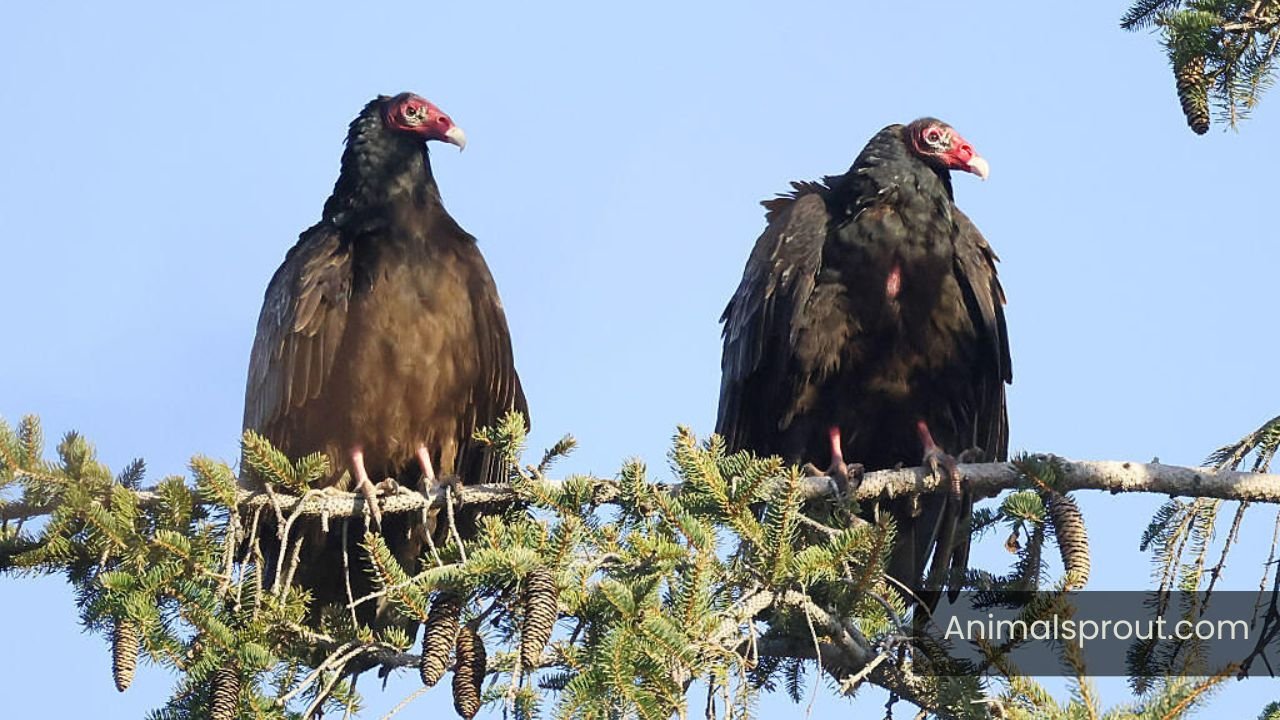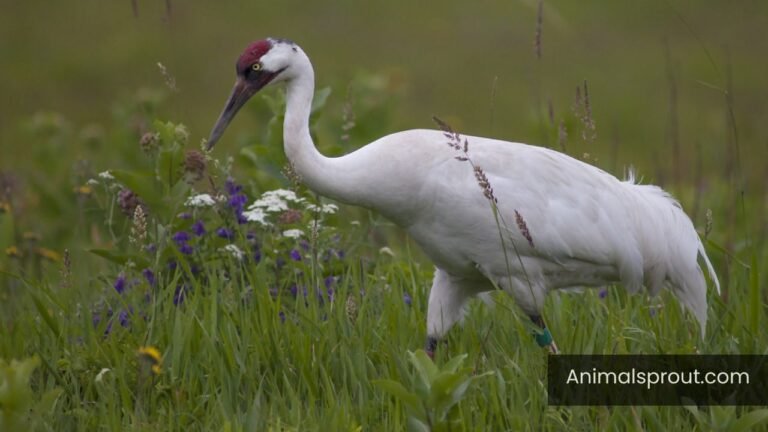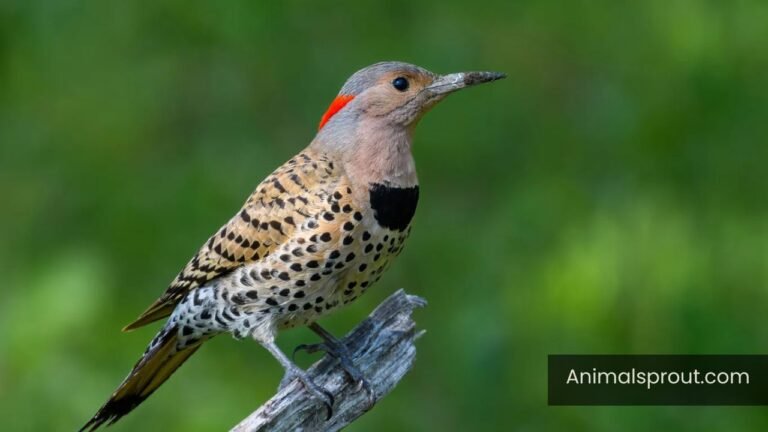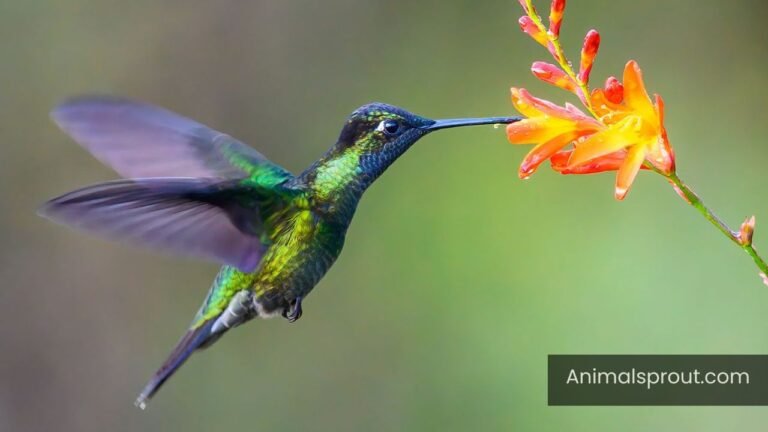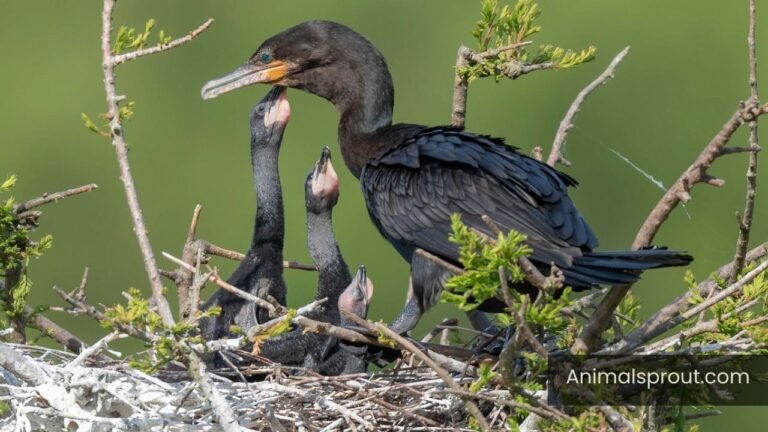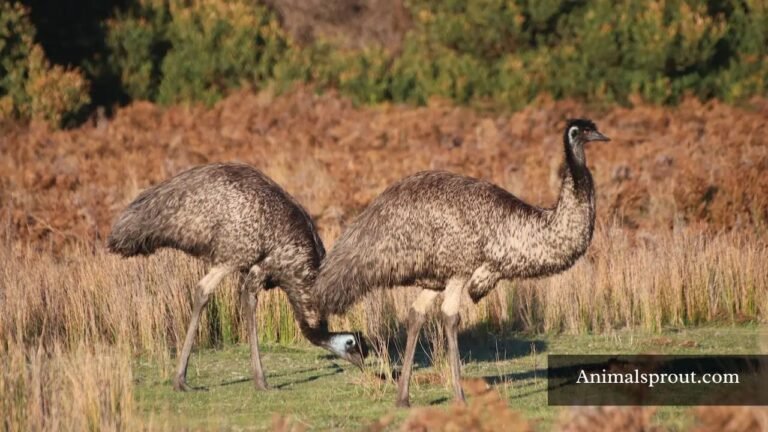Vultures In Michigan (2 Known Species)
While often overlooked and misunderstood, these scavengers are vital for maintaining environmental balance by consuming carrion and preventing the spread of disease. In this article, we’ll explore the fascinating world of vultures in Michigan, their behaviors, habitats, and the ecological importance they hold. By the end, you’ll have a deeper appreciation for these birds and their essential contributions to the natural world.
Types Of Vultures In Michigan
Below are the vultures of Michigan:
- Turkey Vulture
- Black Vulture (Rare)
Turkey Vulture
Scientific Name: Cathartes aura
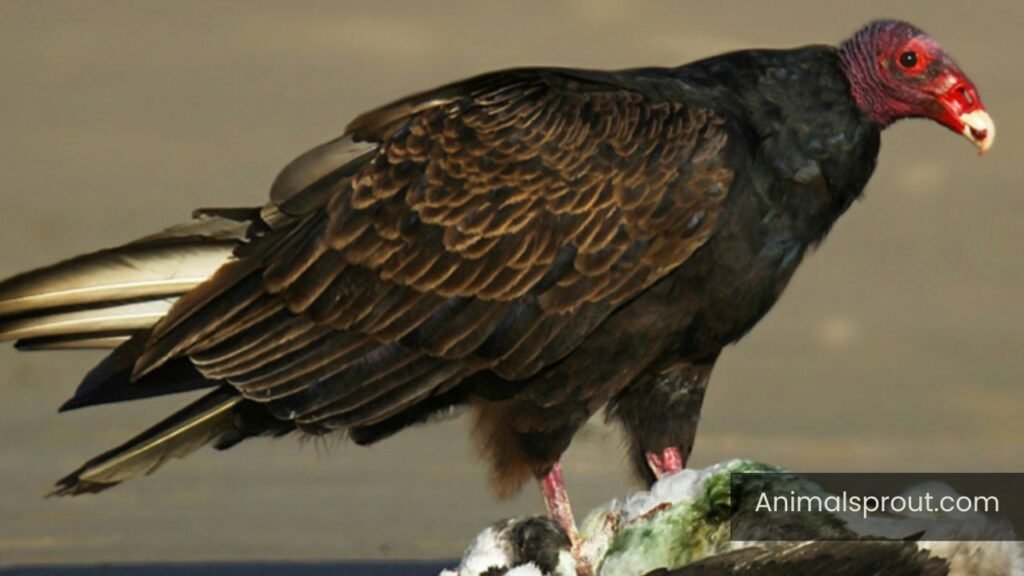
Identification
The Turkey Vulture, a striking presence in Michigan’s skies, is easily identified by its impressive wingspan, which can reach up to six feet. With dark brown feathers and distinctive featherless red heads, these birds exude an aura of mystery and intrigue. What sets them apart, however, is their unique soaring ability; they glide gracefully on thermal currents, often spotted with their wings held in a slight V-shape. This behavior not only aids in their search for carrion but also allows them to cover vast distances while conserving energy.
In addition to their physical traits, Turkey Vultures possess an extraordinary sense of smell that distinguishes them from many other scavengers. Unlike eagles or hawks that rely primarily on sight, these remarkable birds can detect the scent of decaying animals from miles away. Observing a Turkey Vulture circling overhead often hints at the presence of wildlife carcasses below, making them an unintentional guide for nature enthusiasts eager to explore the local ecosystem. Their role as nature’s clean-up crew is not just fascinating; it’s essential for maintaining the balance in Michigan’s diverse habitats, showcasing how even the most misunderstood creatures contribute significantly to the health of our environment.
Related article: Explore Cormorants In Michigan.
Range
The Turkey Vulture, a remarkable scavenger, can be found throughout Michigan, where its range extends from the southern tip of the state all the way up to the northern regions. These birds are most commonly spotted in open areas, including farmlands, wetlands, and forest edges, where they effortlessly glide on thermal currents. Their keen sense of smell sets them apart from other raptors, allowing them to detect carrion from great heights—a trait that enables them to thrive in diverse habitats.
Diet and Foraging Behavior
The Turkey Vulture, often seen soaring gracefully on thermals, plays a critical role in Michigan’s ecosystem as a scavenger. Its diet primarily consists of carrion, making it an essential player in the natural cleanup crew. This bird’s keen sense of smell is particularly fascinating; unlike many birds that rely heavily on sight, Turkey Vultures can detect the scent of decaying flesh from over a mile away. This olfactory prowess allows them to locate food sources that other scavengers may overlook, showcasing a unique adaptation that sets them apart in the avian world.
Foraging behavior in Turkey Vultures is not just about finding food; it’s a complex interaction with their environment. These birds often congregate in groups to feast, employing a social foraging strategy that enhances their chances of discovering carrion. Their preference for freshly deceased animals also highlights their role in controlling disease by consuming potentially harmful remains before they can affect other wildlife or humans. Observing a Turkey Vulture in action can reveal much about the interconnectedness of species and the delicate balance within Michigan’s ecosystems, reminding us of nature’s intricate web of life where every creature has its purpose.
Where to Find this Bird
In Michigan, the Turkey Vulture can be spotted in a variety of habitats, making it an accessible sight for both seasoned birdwatchers and casual observers. These birds thrive in open areas such as fields, wetlands, and along the edges of woodlands, where they can soar effortlessly on thermal updrafts. One of the best locations to observe Turkey Vultures is the expansive landscape of the Lower Peninsula, particularly around the Saginaw Bay and the many nature preserves that dot the region. Their keen eyesight allows them to locate food from great heights, so keep your eyes peeled while driving along rural roads or hiking through parks—these scavengers often gather near roadside carrion.
For those seeking a more immersive experience, the annual migration in late summer and early fall offers a thrilling opportunity to witness large flocks as they travel south. Popular spots like the Kirtland’s Warbler Wildlife Management Area or the shores of Lake Michigan can provide excellent vantage points.
Black Vulture (Rare)
Scientific Name: Coragyps atratus
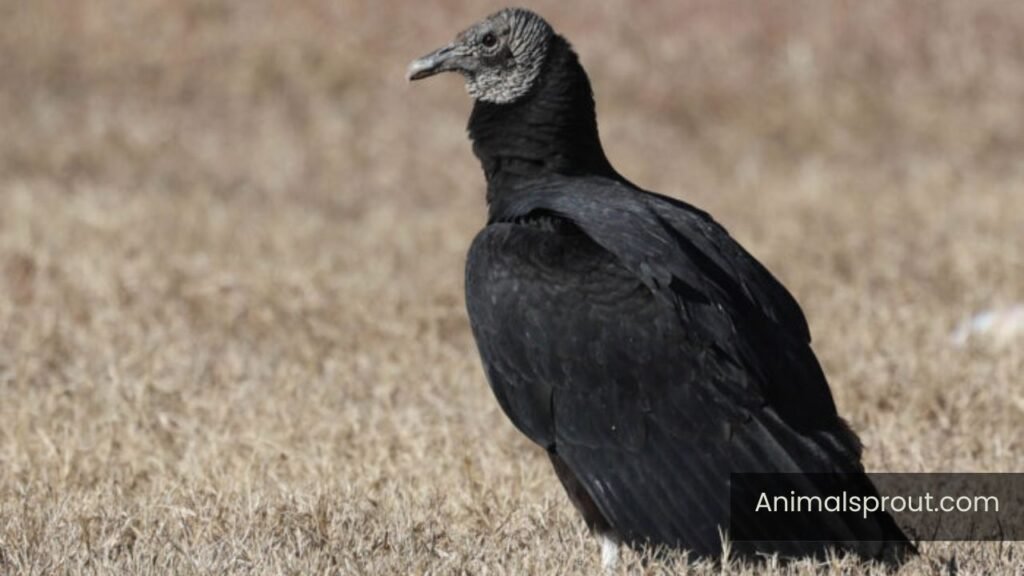
Identification
The Black Vulture, a striking bird of prey, can often be spotted soaring over the diverse landscapes of Michigan, where its dark plumage and distinctive features set it apart from other raptors. With a wingspan stretching up to five feet, this large bird is unmistakable as it glides gracefully on thermal currents. Its black feathers are occasionally highlighted by a subtle sheen, while its uniquely short, broad tail and square-shaped wings contribute to its recognizable silhouette in the sky. Unlike the more common turkey vulture, which boasts a red head and a keen sense of smell, the Black Vulture relies heavily on its sharp eyesight to locate carrion.
A closer look at the Black Vulture reveals intriguing details that enhance its identification. The bird’s head is adorned with a featherless, grayish skin that serves an essential purpose: it helps keep the vulture clean while feeding on decaying carcasses. Observers may also notice the vulture’s distinctive white wing tips, which are especially prominent during flight, providing another clue to its identity.
Readmore: Are There Badgers In Michigan?
Range
The Black Vulture, with its striking black plumage and distinctive gray wings, has carved out a unique niche in Michigan’s avian landscape. Historically, these birds were primarily found in the southern regions of the United States, but a notable shift in their range has occurred over the past few decades. As climate patterns evolve and human development encroaches upon traditional habitats, Black Vultures have begun to expand their territory northward, making Michigan a surprisingly suitable home for this adaptable species.
In Michigan, Black Vultures are often spotted in areas where open fields meet wooded regions, showcasing their preference for diverse habitats that provide ample foraging opportunities. The state’s abundant agricultural landscapes offer a smorgasbord of carrion, while the presence of wetlands and forests provides essential nesting sites.
Diet and Foraging Behavior
The Black Vulture, a captivating scavenger found in Michigan, exhibits a fascinating foraging behavior that sets it apart from its avian counterparts. Unlike its more solitary relatives, the Turkey Vulture, which relies heavily on its keen sense of smell to locate carrion, the Black Vulture primarily depends on sight. This reliance on visual cues often leads them to scavenge in groups, an intriguing social dynamic that enhances their foraging success. As they soar gracefully over landscapes, they are not just searching for food; they are also observing their surroundings for the telltale signs of other scavengers at work, often following larger birds or even mammals to potential meals.
Their diet is as varied as the habitats they inhabit, encompassing everything from roadkill and livestock remains to fish and even the occasional small mammal. In urban environments, Black Vultures have adapted remarkably well, often feasting on discarded food waste, showcasing their incredible resilience and versatility. This adaptability is not only a testament to their survival skills but also highlights the interconnectedness of ecosystems, where these birds play a crucial role in maintaining cleanliness and balance.
Where to Find this Bird
The Black Vulture, with its distinctive dark plumage and strikingly bare head, has become an increasingly common sight in Michigan’s landscapes, particularly in the southern regions. To spot these fascinating birds, venture into areas where open fields meet woodlands, especially around the wetlands and riverbanks that provide ample food sources. Locations like the Huron-Clinton Metroparks, the expansive grounds of the Detroit River International Wildlife Refuge, and the marshy edges of the Kalamazoo River are prime spots for birdwatchers seeking to catch a glimpse of these scavengers in action.
One intriguing aspect of Black Vultures is their social behavior; they often roost in groups, making them easier to find when perched high in trees or on barn roofs. Early morning or late afternoon outings can yield rewarding encounters, as these birds take to the skies in search of food.
Readmore: Explore are there cranes in Michigan?
Final Words
The presence of vultures in Michigan serves as a testament to the state’s rich biodiversity and the importance of preserving natural habitats. These remarkable birds play a vital role in maintaining ecological balance by scavenging on carrion, thus preventing the spread of disease. As we continue to learn more about their behaviors and contributions to the ecosystem, it becomes increasingly essential to advocate for their protection.
Whether through supporting local conservation efforts or simply appreciating these magnificent creatures in their natural environment, each of us can contribute to their survival. Let us work together to ensure that vultures remain a part of Michigan’s wildlife for generations to come.
FAQs
Are there vultures in michigan?
Yes, there are vultures in Michigan, specifically the Turkey Vulture and the Black Vulture. Turkey Vultures are more common and can be seen soaring in the sky with their distinctive red heads. They prefer open areas and are often spotted near roadsides or fields where they search for carrion. Black Vultures, while less common in Michigan, have been spotted occasionally, particularly in the southern parts of the state.
What bird is Michigan known for?
Michigan is well-known for the American Robin, which is often considered the state bird. This vibrant songbird, with its distinctive orange-red breast and cheerful song, is a familiar sight in gardens and parks across the state.
Are vultures intelligent?
Yes, vultures are surprisingly intelligent birds. They have developed complex social behaviors and can communicate effectively with one another. For instance, they often use a form of body language to signal danger or to coordinate when feeding on carcasses. Their ability to navigate vast distances in search of food also showcases their problem-solving skills. Vultures possess strong memories, allowing them to remember locations of reliable food sources. This intelligence plays a crucial role in their survival, as they need to find carrion efficiently in their habitats.

